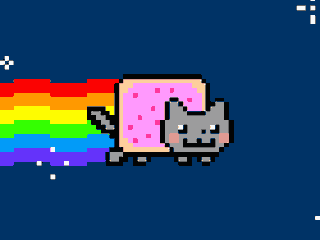
Imagine for a minute that you owned something, but you did not control it, others had access to it, they could share it, use it, copy it, and that there was an infinite number of exact replicas of the thing you owned. If you’re asking the question: ‘How does that amount to ownership?’ – you’re not alone. Welcome to the world of NFTs, or non-fungible tokens.
NFTs are a closely related cousin to cryptocurrency, and as far as booming asset classes go, NFTs are the star of early 2021.
NFT – WTF? – Non-fungible tokens have been used to sell ownership of digital goods and I feel a natural evolution within the crypto economy. NFTs allow buyers to purchase and claim ‘ownership’ of a digital good. At this stage, the good is usually an image, a GIF, animations, or even a piece of video footage. The ownership element takes the form of a unique digital token, which lives on a blockchain as proof of ownership. Unlike a traditional cryptocurrency, these are not fungible – in that they cannot be broken into pieces and partially sold.
The primary purpose at this point has been in support of the artists themselves who trade in digital art.
Now for the weird bit… The only thing the buyer truly owns with NFTs is the claim to ownership, which is the token itself, but not the actual asset. Buyers do not have exclusive use or control of the asset.
The NFT Bubble – As is often the case in burgeoning economies, artists have led the way. Some artists are selling their NFTs for serious money. The advantage for these artists is that if the NFT is on sold again, they get a percentage commission of future sales via smart contracts. A new version of the ‘internet famous’ Nyan Cat’ – (the image at the top of this post) fetched the original artist Chris Torres US$590,000 (which was 300 Ether at the time of sale). The Artist Grimes (also the partner of Elon Musk) has sold art worth more than US$6 million this month. This included some individual pieces for nearly $400,000, as well as pieces for which up to 700 NFTs were sold of the exact same item – yes, you read that right – over 700 claims of ownership – against the same copy-able digital asset. Let’s just say it is a very good result for Grimes. While the digital artist Beeple has been the absolute gangster of this game selling his piece 5000 Days for US$69 million through Christies auction house. The advantage for these artists is that if the NFT is on sold, they get a percentage commission of future sales via smart contracts.
If you think this is an irrational bubble – then trust your instincts.
The Future of NFTs – NFTs present an interesting future for much more than art, but potentially all forms of creative work. After the bubble bursts, the potential for smart contracts around the ownership of not just digital assets, cannot be understated.
Imagine having the rights to the NFT of a song, an image, or even a sporting highlight. Via the use of smart self executing contracts, royalties could be paid to you as its rightful owner, verifiable on a blockchain. It could change the way monetisation of the internet works, it could go from from a battle of attention and advertising dollars, to actually rewarding the creators of the digital content we consume.
On the flip side imagine you want to use a Drake song on a Youtube video you’ve created. Today, copyright wouldn’t allow it – it would be pulled down. But in the future musical artists could have NFT contracts against their songs which allow you to use it, and pay the artist directly a few cents per view. All of a sudden artists can escape the Youtube vortex and get paid hundreds of dollars from million of fans around the world using their music on their content.All we’d need to make this happen is an AI engine which scours the internet assigning creative credit and revenue to artists in much the same way that google crawls the web. But this would be done via a BlockChain protocol. This would be far more profitable than what they get from advertising dollars and subscription services, and the occasional big pay day from an advertising campaign using a song. It would be better for the artists and consumers. The only losers would be big tech and the music industry.
NFT’s Get Physical – The Kings of Leon did a really interesting NFT play on their recent album. They launched a token priced at $50 which includes enhanced media — kind of like an alternate, moving album cover — as well as a digital download of the music, and a limited-edition vinyl. They also had other NFT’s which would give purchasers lifetimes access to concert tickets and things like front row seats. This is where things can and should go. We need to remove the delineation between the physical and digital worlds – because they are quite frankly, the same place. We need to think of NFT’s as a set of rights and conditions for which contracting parties can mutually benefit and create long term loyalty. If we do that, then we’ll have a pretty good chance of moving away from big tech as the arbiters of all that we do when it comes to transacting online.
– – –
Keep Thinking,
Steve.